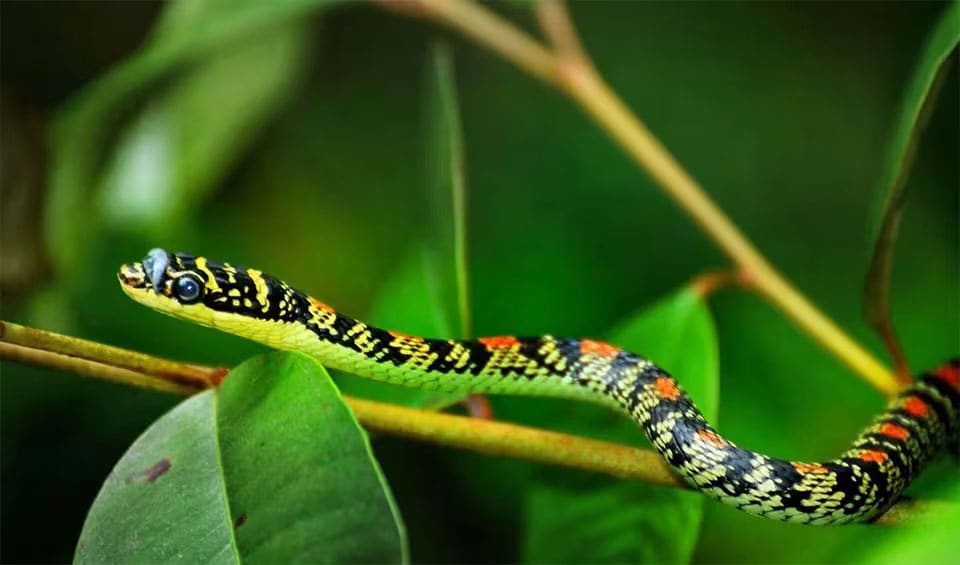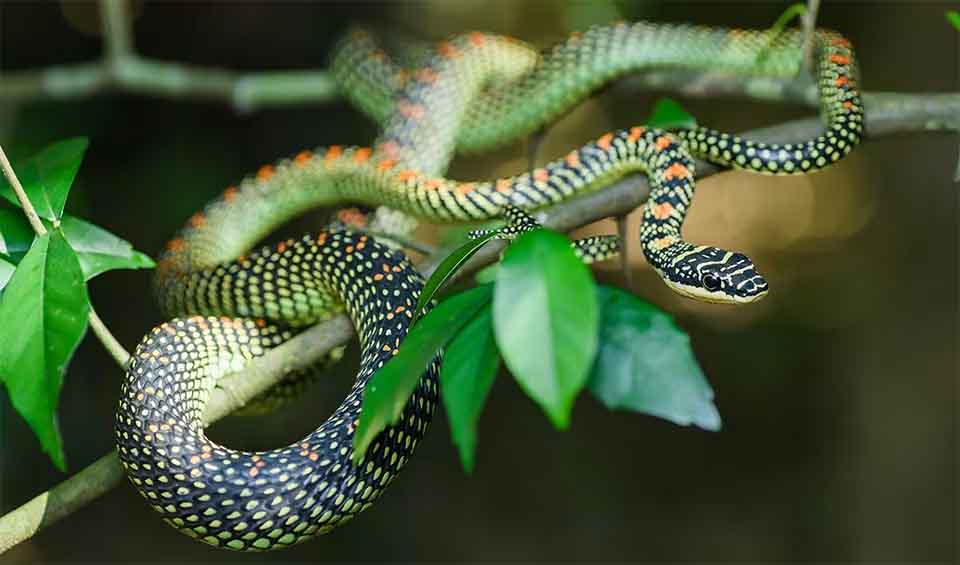Chrysopelea – Flying snakes
They use their flattened bodies and undulating movements to glide through the air, making them exceptional aerial gliders
A remarkable group of serpents thriving in the dense forests of South and Southeast Asia. This fascinating genus includes five species that have captivated scientists and nature enthusiasts with their unique ability to glide through the air. Unlike other snakes, Chrysopelea species spend a significant portion of their lives in the treetops, rarely descending to the ground, embodying a truly arboreal lifestyle.
What sets flying snakes apart from other arboreal snakes is their astounding gliding ability. They can launch themselves from the treetops and glide horizontally through the air for distances up to 100 meters (about 300 feet). This incredible feat is achieved through a remarkable physical adaptation: when preparing to glide, a flying snake will leap into the air, then flatten its body by splaying its ribs, transforming its normally round body into a concave shape. This change effectively turns the snake’s body into a wing, allowing it to glide smoothly from one tree to another. The snake controls its direction and speed by making undulating movements in the air, much like it would when slithering on the ground.
Despite their venomous nature, Chrysopelea snakes pose little to no threat to humans. Their venom is mild and specifically adapted for subduing their small prey, such as lizards, frogs, and birds, rather than for defense against larger predators.
Species in this genus
Golden tree snake
An accomplished climber with the ability to glide!
Paradise flying snake
A snake that can fly? Well, not exactly fly, but glide through the air like a superhero



